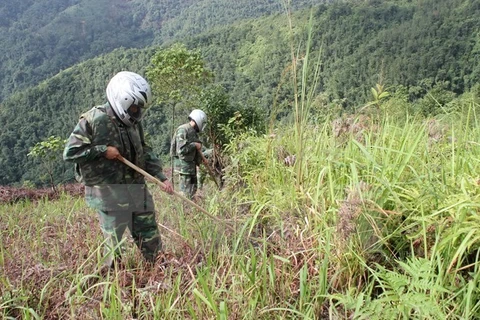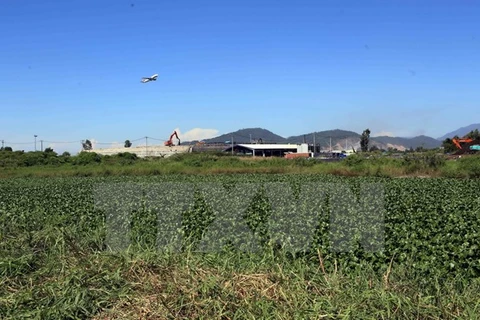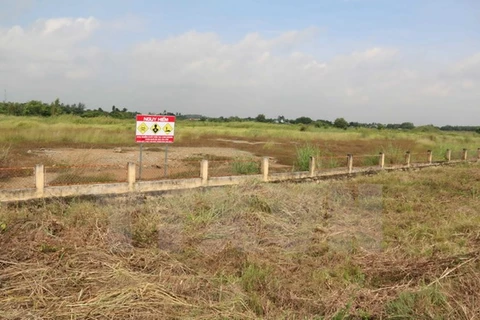Hanoi (VNA) – Post-war bombs and mines have remained a daily threat to people and a headache for Governments of many countries worldwide, including Vietnam.
It is estimated that more than 6.1 million ha of land or 18.71 percent of Vietnam’s total area are contaminated with about 800,000 tonnes of bombs, mines and unexploded ordnances (UXO) left by wars, which are scattered over all 63 cities and provinces in the country, with the central region the hardest hit.
Between 1975 and now, bombs and mines killed more than 40,000 people and injured 60,000 others, many of whom are family breadwinners and children.
Over 2,000 sappers died and got injured while searching for bombs and mines during the period.
Right after the end of war, the Vietnamese Party and State have identified the settlement of consequences caused by war-left bombs, mines and UXO as an urgent but regular, long-term task.
On April 21, 2010, the Prime Minister approved a national action programme on overcoming post-war bomb and mine consequences during 2010-2025 (Programme 504), aiming to mobilise domestic and foreign resources for these efforts.
During 2010-2015, the programme focused on surveying and drawing up a map of danger zones of bombs, mines and UXO. A centre was set up to manage data of bomb and mine victims, contamination situation and countermeasures.
For the 2016-2025 period, the Government aims to clear about 800,000 ha of bomb-and mine-polluted land, while calling for domestic and international resources for the implementation of the programme.
At the same time, residents living in the danger zones will be relocated and bomb and mine clearance projects will be added to local socio-economic development plans.
The Prime Minister issued a decision on May 24, 2017 on the establishment of the National Steering Committee on the Settlement of Post-war Unexploded Ordnance and Toxic Chemical Consequences (Committee 701).
The committee has been tasked with proposing solutions to mobilise donations at home and abroad for the settlement of consequences of post-war bombs, mines and toxic chemicals in Vietnam.
Apart from the Vietnamese Government’s efforts, international donors and non-governmental organisations have provided equipment and finance to support the settlement of bomb and mine consequences in the country.
Thanks to the joint efforts, each year, Vietnam decontaminated from 40,000-50,000 ha of land. However, it will take more than a century to clear all bombs and mines in the country, with an estimated cost of over 10 billion USD, excluding spending on resettlement and social welfare work in the danger zones.
In Vietnam, 40 social service centres and 400 rehabilitation centres have been established so far to assist people with disabilities, including victims of post-war bombs and mines.
All bomb and mines victims in the country have been entitled to social welfare benefits such as free health insurance cards and support in functional rehabilitation and vocational training.-VNA
VNA
























